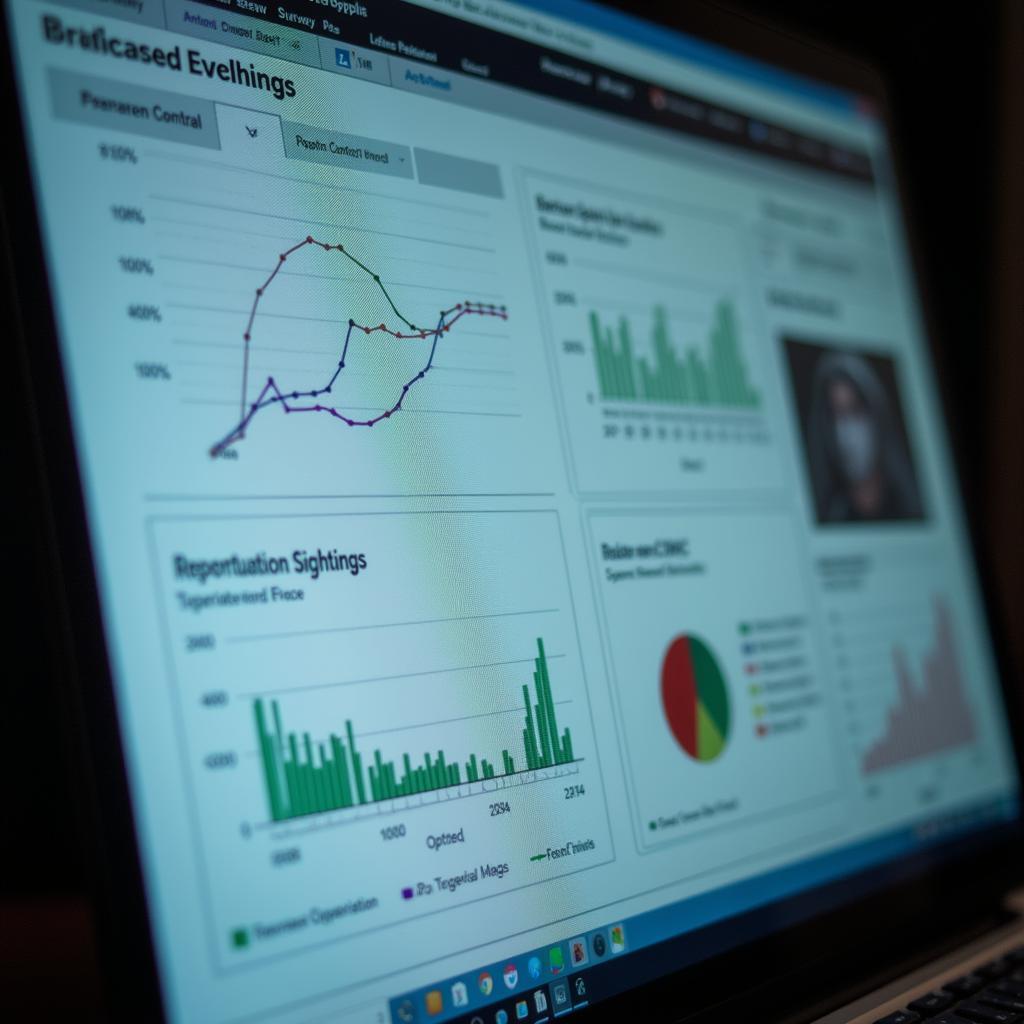Survey Tools For Research are essential for any investigation, whether you’re exploring the mysteries of the human mind or the enigmatic realm of the paranormal. These tools offer a structured approach to gathering data, providing valuable insights that can shed light on the unknown. Just as a scientist uses a microscope to delve into the microscopic world, researchers of the paranormal utilize survey tools to probe the depths of unexplained phenomena. We often use online survey tools for research into public perception of paranormal events.
Gathering reliable data is paramount in paranormal research. Unlike traditional scientific fields, where controlled experiments are readily achievable, paranormal investigations often rely on anecdotal evidence and subjective experiences. This makes online survey tools for research invaluable for systematically collecting and analyzing data, offering a glimpse into the elusive nature of these phenomena. These tools enable researchers to collect data on a larger scale, moving beyond individual accounts and towards a more comprehensive understanding of the paranormal landscape.
Choosing the Right Survey Tool for Paranormal Research
The efficacy of your paranormal research heavily depends on selecting the appropriate survey tool. Different tools offer various features, catering to specific needs and research methodologies. Some are designed for large-scale quantitative studies, while others focus on qualitative data collection through in-depth interviews and open-ended questions.
Key Features to Consider:
- Customization: The ability to tailor questions to specific paranormal phenomena is crucial. For instance, a survey about ghostly apparitions will require different questions than one exploring psychic abilities. Look for tools that allow flexible question formats, branching logic, and multimedia integration.
- Data Security and Anonymity: Protecting the privacy of participants is paramount, particularly when dealing with sensitive subjects like paranormal experiences. Ensure the chosen tool provides robust data security and allows for anonymous responses.
- Data Analysis and Reporting: Effective analysis and interpretation of collected data are essential for drawing meaningful conclusions. Choose a survey tool that offers comprehensive data analysis features, including data visualization, statistical analysis, and report generation.
Exploring Different Types of Survey Tools
Several types of survey tools can be utilized for paranormal research, each with its strengths and weaknesses. Online surveys, for example, provide a cost-effective way to reach a wider audience. Phone surveys allow for direct interaction with participants, facilitating deeper exploration of their experiences. In-person interviews provide the richest qualitative data, allowing researchers to observe non-verbal cues and build rapport with participants.
Online Survey Platforms:
- SurveyMonkey: A popular choice for its user-friendly interface and advanced features.
- Typeform: Known for its visually appealing and engaging surveys.
- Google Forms: A free and easily accessible option, suitable for basic surveys.
For researchers interested in remote work opportunities within the field of data research, understanding and utilizing these tools is a valuable asset. You might find resources on data research jobs work from home.
Analyzing Survey Data for Paranormal Insights
Once the data is collected, the real work begins: analyzing and interpreting the findings. This process requires careful consideration of the research questions, the type of data collected, and the limitations of the chosen methodology. Statistical analysis can help identify patterns and correlations within the data, while qualitative analysis focuses on understanding the meaning and context behind participants’ responses.
“In paranormal research, it’s not just about what people say, but how they say it,” says Dr. Emily Carter, a leading expert in parapsychology. “Qualitative analysis allows us to delve into the nuances of their experiences, uncovering hidden meanings and insights that might otherwise be missed.” This is where considering options such as Hanover research might be beneficial.
Common Pitfalls to Avoid:
- Confirmation Bias: Interpreting data to support pre-existing beliefs.
- Small Sample Size: Drawing conclusions from insufficient data.
- Leading Questions: Influencing participant responses through biased question phrasing.
“A researcher wanting to do a web-based survey should carefully consider the potential biases,” adds Dr. Carter. “A well-designed survey is crucial for obtaining reliable and meaningful results.” If you’re planning a web-based survey, you might find useful resources at a researcher wants to do a web-based survey.
 Analyzing Paranormal Survey Data for Insights
Analyzing Paranormal Survey Data for Insights
In conclusion, survey tools for research are indispensable for exploring the enigmatic realm of the paranormal. By carefully selecting the appropriate tool, designing robust surveys, and employing rigorous analysis techniques, researchers can unlock valuable insights into the unknown. These tools provide a structured and systematic approach to data collection, enabling a deeper understanding of the paranormal landscape.
FAQ
- What are the most popular survey tools for paranormal research?
- How can I ensure the anonymity of survey participants in sensitive paranormal research?
- What are some key features to look for in a survey tool for paranormal research?
- What are the different types of survey tools available for paranormal research?
- How can I analyze survey data to gain insights into paranormal phenomena?
- What are some common pitfalls to avoid when analyzing survey data in Paranormal Research?
- Where can I find more information on data research jobs that allow me to work from home?
If you need further assistance, please contact us at Phone Number: 0904826292, Email: research@gmail.com or visit us at No. 31, Alley 142/7, P. Phú Viên, Bồ Đề, Long Biên, Hà Nội, Việt Nam. We have a 24/7 customer support team.